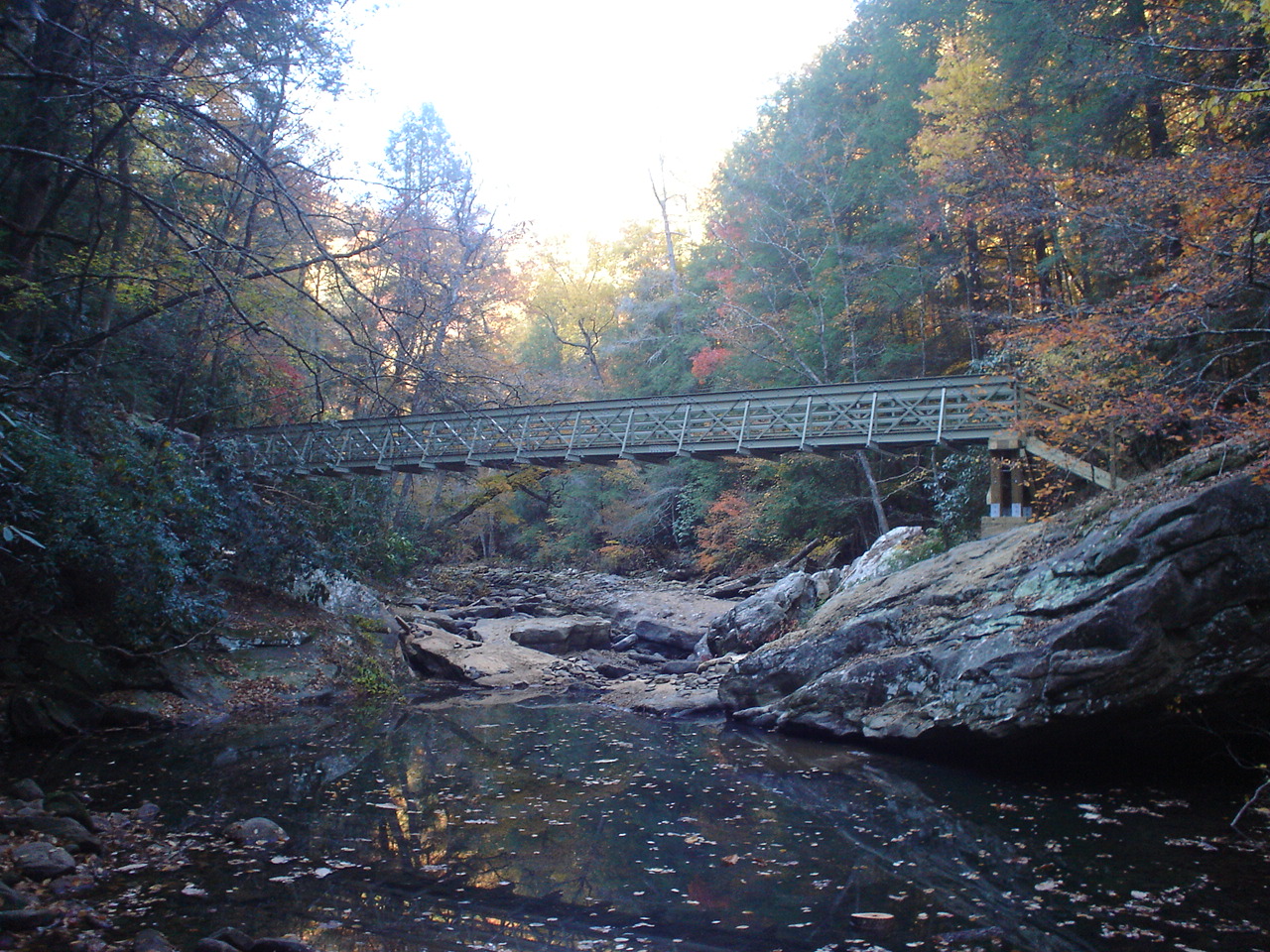Dig, clear, carry, measure, saw, cut, hammer, hike, explore - it's all part of completing Tennessee's 53rd state park.
It is a task that volunteers and state employees have been doing year after year in the Justin P. Wilson Cumberland Trail State Park.
Much of the work to build bridges and clear the almost 300 miles of trail is in remote areas, making the task more difficult.
The footpath stretches from the Cumberland Gap National Historical Park on the Tennessee-Kentucky state line to Signal Mountain at the Chickamauga-Chattanooga National Military Park. About two-thirds of it has been done.
Crossing 11 counties, Tennessee's first linear park became a state park in 1998. Work on it is expensive and takes time and coordination between various volunteer groups and the state, said Judy Varner, chairwoman of the executive board of the Cumberland Trail Conference.
A CTC volunteer for the last 10 years, Varner estimated that she gives about 700 hours a year to the organization. She said she enjoys "seeing the finished product."
"What is most rewarding is working with the people that my husband and I work with. The volunteers are all great," she said.
She noted that seven colleges sent students to work on the trail this year.
Over the last several years the CTC has been responsible for providing the manpower to construct three bridges in the Soddy-Daisy area: over Big Possum, Little Possum and Rock creeks. The total cost of those bridges was about $120,000.
The 80-foot Rock Creek bridge, which was built in 2008, was the CTC's longest and biggest project in the area. Normally spanning 25 feet above the creek, it took about three weeks to complete. Varner said about 75 volunteers carried materials and construction scaffolds about a mile and a half to the job site, and then it took about two weeks to build.
"Everything was carried in -- all the scaffold, concrete, everything," she stated.
With a major part of the necessary bridges completed, the CTC and other groups now will focus on clearing the remaining trail sections.
"[State workers] are going to take over bridge construction, and we are going to concentrate on building the trail," Varner said. "We will do whatever they need done. We are not just taking the lead.
"I know that the state parks [department] wants it accelerated -- they want it sooner -- and we are still working with them as to how we can do that," Varner said.
Asked the total number of bridges required for the trail, Bobby Fulcher with the Tennessee State Parks said, "We have a rough idea. We know of at least 52 bridge sites, and there could very well be another 20 very short bridges."
According to John Dorough, another trail volunteer, just a few more days are required to complete the Deep Creek bridge.
Dorough, an avid rock climber, uses climbing equipment to help move equipment and materials in place for construction of the bridges.
"It has truly been a legacy project," he said about the Deep Creek bridge.
"Needless to say, it is going to be a great asset to the CT, and completion of the Big Soddy bridge is next," Dorough added.
That one will be the "most costly," Fulcher said, projecting that expense at about $57,000.
Building bridges is not the only challenge, he added.
"We don't know exactly where the trail will go in some places," he noted.
While most of the trail corridor has been established, part of the path is still an open item.
"We are just about at 90 percent in terms of our land acquisition," Fulcher said, citing a goal of finishing the trail within five years -- at an expected cost of about $2.4 million.
However, with close to 200 miles already completed, the state already is putting emphasis on maintaining the existing portion.
Much like other long trails, the Cumberland Trail will have shelters.
"We have one shelter now and I won't be surprised, as the Cumberland Trail develops, that we will have more shelters," said Fulcher, who has worked for the state since 1976.
"We will have designed campsites, and we have to keep educating our backpackers and the people that use the trail to take care of it. We are reorganizing our volunteer program in a way, and we will be reaching out to organizations and individuals to maintain trail, trail heads and campsites.
"The trail will serve a great purpose. We will have some of the most spectacular scenery in the United States. Our trail just does not become a green tunnel. There is so much water on it with the waterfalls and all."
Contact Gary Petty at sports@timesfreepress.com or 757-6291.

